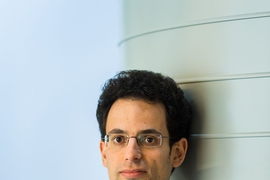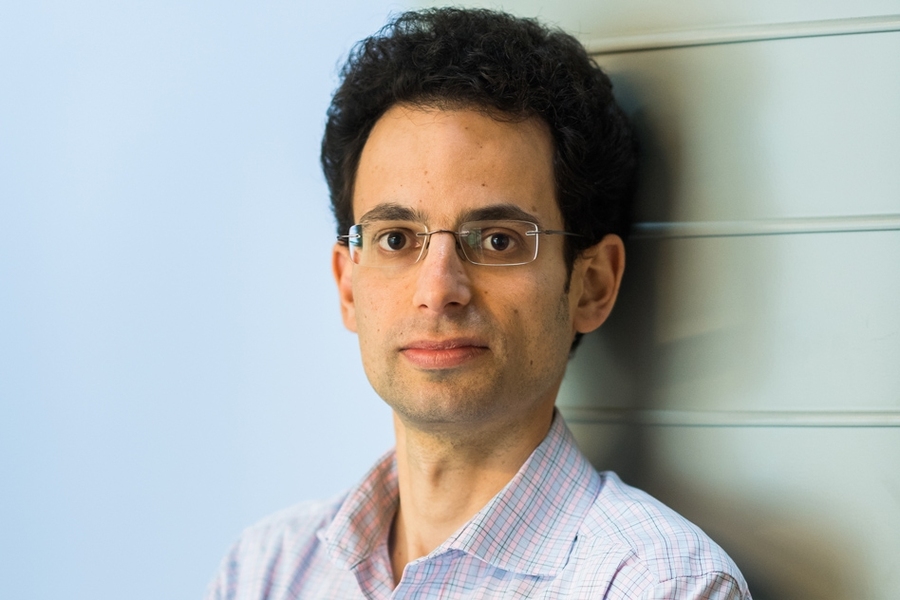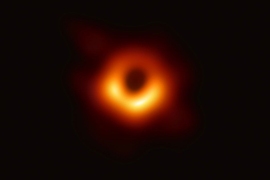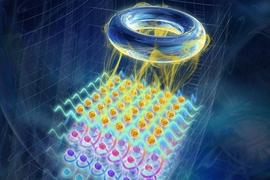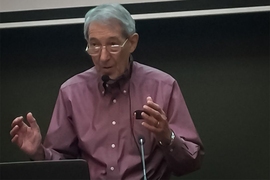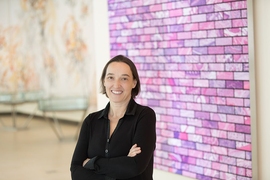The Event Horizon Telescope (EHT) Collaboration, including scientists and engineers from MIT, will receive a 2020 Breakthrough Prize in Fundamental Physics. The team is being honored for making the first direct detection of a black hole. Assistant professor of physics Max Metlitski and several MIT alumni are also receiving awards from the Breakthrough Prize Foundation.
The $3 million fundamental physics prize will be shared equally with the 347 EHT researchers from around the world who co-authored the six papers published on April 10, 2019, which reported the detection of the supermassive black hole at the heart of Messier 87, or M87, a galaxy within the Virgo galaxy cluster.
The new laureates will be recognized at an awards ceremony in Mountain View, California, on Nov. 3.
Earth-sized telescope
The EHT is a global network of radio telescopes that work together as one virtual telescope, with a resolution sharp enough to “see” a black hole’s shadow.
Researchers at MIT’s Haystack Observatory made several key contributions as members of the global collaboration, such as developing the ultrafast devices that record the vast volumes of data captured by each telescope.
After the observing run ended, the data were sent to Haystack and to the Max Planck Institute for Radio Astronomy, where they were processed using a specialized supercomputer called a correlator, also developed by Haystack researchers. Teams at both institutions then undertook the painstaking process of “correlating” the data and ensuring they were rigorously verified before being released to the independent teams that would create the images of M87.
The result, according to the Breakthrough Prize citation, was “an image of this galactic monster, silhouetted against hot gas swirling around the black hole, that matched expectations from Einstein's theory of gravity.”
MIT-affliated scientists and engineers who will share in the prize include researchers and alumni from Haystack Observatory, the Department of Electrical Engineering and Computer Science, the Department of Physics, the Department of Earth, Atmospheric and Planetary Sciences, and the MIT Kavli Institute for Astrophysics and Space Research. They are: Kazunori Akiyama, Frederick K. Baganoff, John Barrett, Christopher Beaudoin, Lindy Blackburn, Katherine L. Bouman, Roger Cappallo, Geoffrey B. Crew, Joseph Crowley, Mark Derome, Sheperd S. Doeleman, Chris Eckert, Vincent L. Fish, William T. Freeman, Michael H. Hecht, Colin Lonsdale, Sera Markoff, Lynn D. Matthews, Stephen R. McWhirter, James Moran, Kotaro Moriyama, Michael Nowak, Joseph Neilsen, Daniel C. M. Palumbo, Michael Poirier, Alan Rogers, Chet Ruszczyk, Jason SooHoo, Don Sousa, Michael Titus, Alan R. Whitney, and Shuo Zhang.
Additional accolades
The Breakthrough Prize Foundation has also honored assistant professor of physics Maxim Metlitski, awarding him a New Horizons prize, which recognizes early-career achievements in physics and mathematics. Metlitski will share the prize with three collaborators, two of whom are MIT alumni: Xie Chen PhD ’12 of Caltech, Michael Levin PhD ’06 of the University of Chicago, and Lukasz Fidkowski of the University of Washington.
The team is being honored “for incisive contributions to the understanding of topological states of matter and the relationships between them,” according to the Breakthrough Prize citation.
“Max is part of a very talented group of experimentalists and theorists working on new materials with very unusual properties,” says Peter Fisher, professor and head of the Department of Physics. “These materials are teaching us how quantum mechanics plays an unexpected role in how electrons and vibrations can travel in materials that could result in new technologies.”
Metlitski earned a BS in physics and mathematics and an MS in physics from the University of British Columbia. After obtaining his PhD in physics from Harvard University in 2011, he held a postdoctoral position at the Kavli Institute for Theoretical Physics at the University of California at Santa Barbara. He joined MIT’s Department of Physics as an assistant professor in January 2017, following a faculty appointment at the Perimeter Institute for Theoretical Physics in Waterloo, Canada.
“On behalf of the School of Science, I congratulate Max Metlitski for this impressive early-career achievement in condensed matter theory,” says Michael Sipser, dean of the MIT School of Science and the Donner Professor of Mathematics. “In addition, I applaud our researchers in the Event Horizon Telescope Collaboration, who contributed to our first images of a black hole. We celebrate our scientists’ pursuit of fundamental research to advance human knowledge and all recipients of these prestigious awards.”
David Jay Julius ’77, a professor at the University of California at San Franciso, has also won a 2020 Breakthrough Prize in Life Sciences, for discovering molecules, cells and mechanisms underlying pain sensation. And last month, Daniel Z. Freedman, professor emeritus in MIT’s departments of Mathematics and Physics, was awarded a Special Breakthrough Prize in Fundamental Physics.

